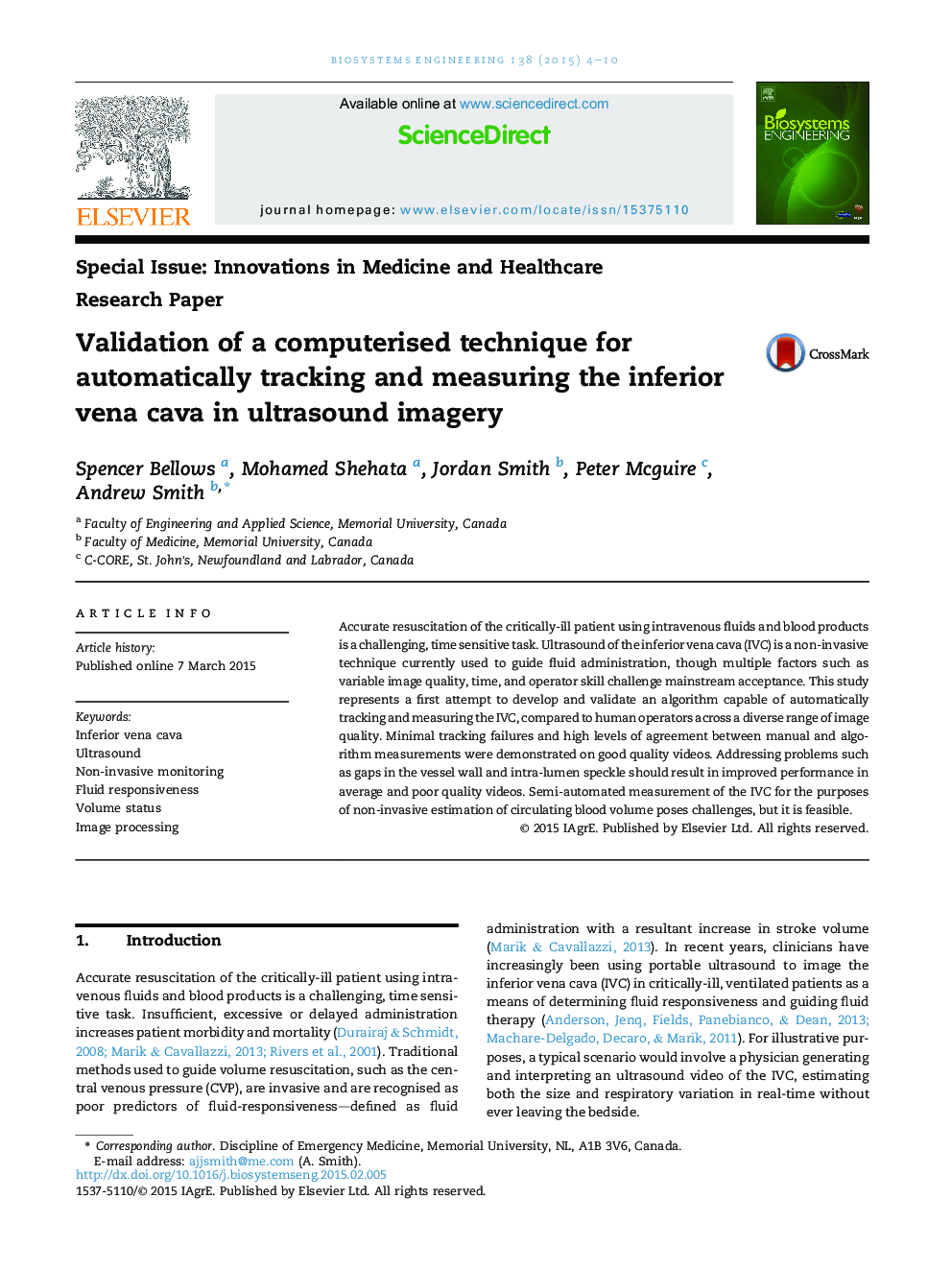| Article ID | Journal | Published Year | Pages | File Type |
|---|---|---|---|---|
| 1710934 | Biosystems Engineering | 2015 | 7 Pages |
•We demonstrate semi-automatic algorithm to track and measure the IVC.•The algorithm is based on a modified watershed technique.•IVC tracked well on good video with performance decreasing with image quality.•Segmentation as good as human operator on good quality video.•Automated non-invasive estimates of volume responsiveness is feasible.
Accurate resuscitation of the critically-ill patient using intravenous fluids and blood products is a challenging, time sensitive task. Ultrasound of the inferior vena cava (IVC) is a non-invasive technique currently used to guide fluid administration, though multiple factors such as variable image quality, time, and operator skill challenge mainstream acceptance. This study represents a first attempt to develop and validate an algorithm capable of automatically tracking and measuring the IVC, compared to human operators across a diverse range of image quality. Minimal tracking failures and high levels of agreement between manual and algorithm measurements were demonstrated on good quality videos. Addressing problems such as gaps in the vessel wall and intra-lumen speckle should result in improved performance in average and poor quality videos. Semi-automated measurement of the IVC for the purposes of non-invasive estimation of circulating blood volume poses challenges, but it is feasible.
